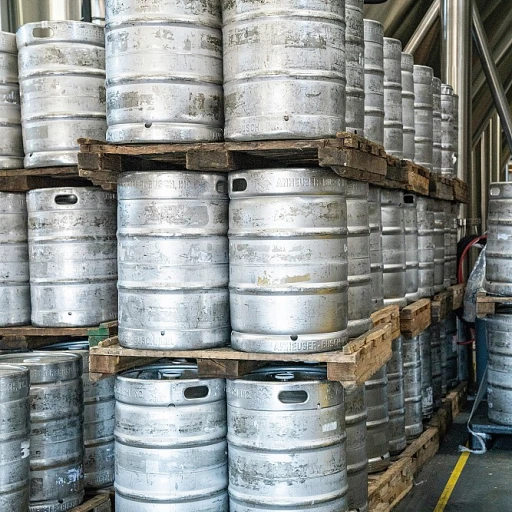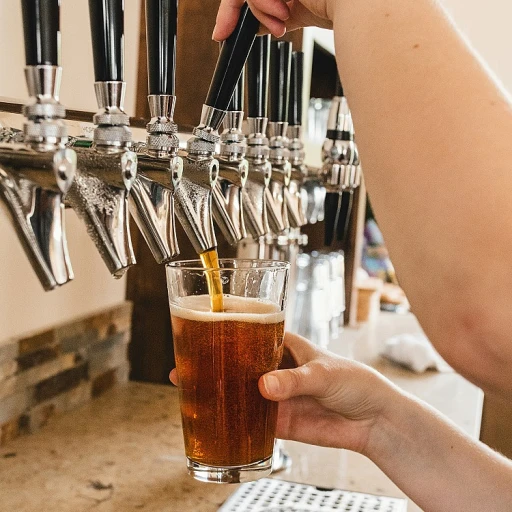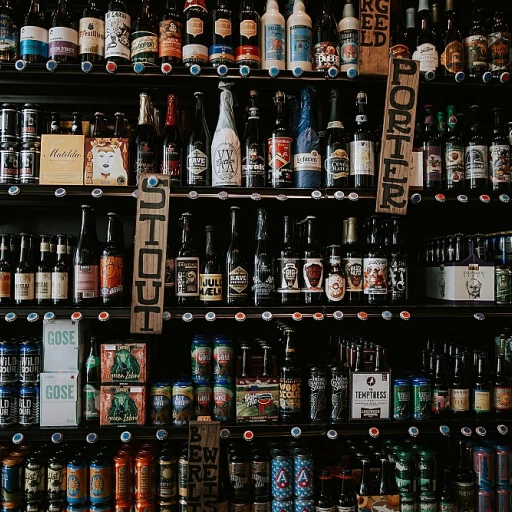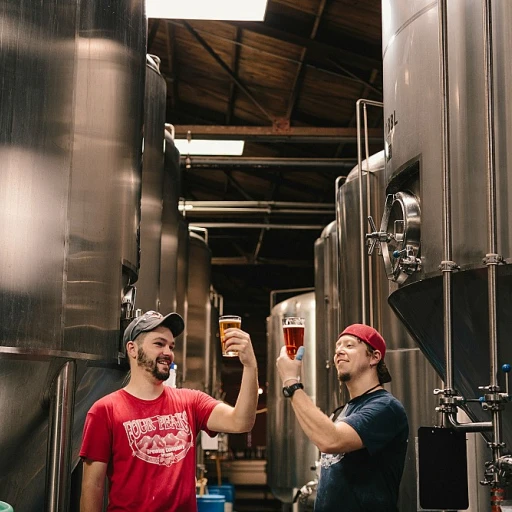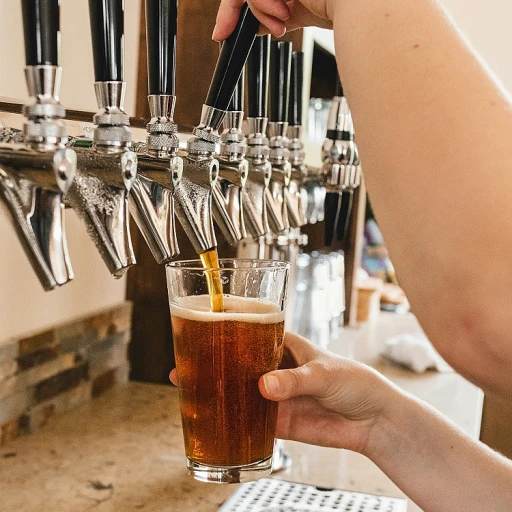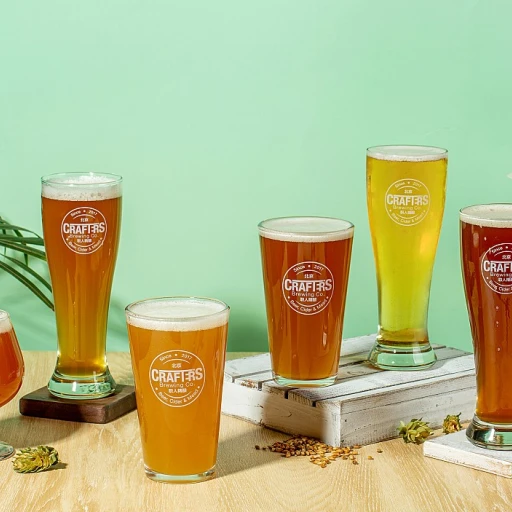
The History of Beer Barrels
From Amphoras to Wooden Vessels
The story of beer barrels dates back to antiquity, when civilizations used clay amphoras and wooden vessels for storing and transporting their beloved brews. The need for a practical and efficient storage solution was crucial as beer played a significant role in social and economic activities.The Rise of Wooden Barrels
As brewing techniques evolved, so did the tools and containers used. Wooden barrels became an ideal choice for their versatility and durability. Cooperage, the craft of making wooden casks or barrels, emerged as a specialized trade. European brewers were among the first to master this art, which quickly spread across the globe.Transitioning to Metal
With the dawn of industrialization, brewers sought even more reliable packaging solutions. Metal kegs began to replace wooden barrels, offering advantages in terms of durability and consistency. While metal kegs are now widely used in commercial brewing, the charm and unique properties of wooden barrels have preserved their place in the beer industry. If you're intrigued by this ancient yet ever-evolving craft, feel free to take a deeper dive into the rich legacy of barrels and brewing.Types of Beer Barrels and Kegs
Varieties of Barrels and Kegs Available
Throughout history, beer barrels and kegs have evolved, offering a range of options for brewers. Each type brings distinct characteristics to the beer stored within them. Let's delve into the different varieties and their unique contributions to the brewing process.
Wooden Barrels – A Traditional Choice
Wooden barrels, synonymous with the traditional art of brewing, are primarily made from oak. They are cherished for their ability to impart complex flavors such as vanilla, caramel, and even a hint of smokiness to the beer. These barrels often play a crucial role in the process of barrel aging, a technique celebrated in the brewing industry for creating premium-quality beers.
Modern Stainless Steel Kegs
In contemporary brewing, stainless steel kegs have become a staple due to their durability, efficiency, and ease of use. Unlike wooden barrels, steel kegs do not add any flavors to the beer, preserving its intended taste profile. Their robust nature allows for repeated use, which is environmentally friendly and cost-effective.
Unique Barrels for Specialized Brews
For brewers seeking to experiment with flavors, barrels previously used to age other spirits, such as whiskey, wine, or rum, offer exciting possibilities. These barrels transfer intriguing flavors to the beer, creating unique and memorable brews. This specialty approach is often employed for limited edition or seasonal beers, providing a delightful experience for both brewers and beer lovers.
To explore more about the varieties and significance of beer barrels in brewing, embark on a journey through the world of beer barrels.
The Art of Barrel Aging
The Intricacies of Aging Beer in Barrels
Barrel aging is a time-honored technique that breathes new life into the art of brewing. With roots deeply tied to the history and types of beer barrels, this process involves storing beer in wooden barrels to enhance its flavor, aroma, and complexity.- Flavors Infused by the Wood: When beer is stored in wooden barrels, it absorbs unique flavors from the wood itself. These flavors can range from vanilla and coconut to more robust, smoky notes. The type of wood and its previous use play crucial roles in determining the final taste of the beer.
- Effect of Time: The aging process in barrels allows the beer to undergo slow oxidation and develop rich, layered flavors. Patience is key here, much like in winemaking, as extended aging can lead to more pronounced and refined characteristics.
- Yeast and Microorganisms: The natural microflora within wooden barrels can contribute to the beer's complexity, particularly in the case of sour or wild ales. These microorganisms can bring about desirable changes, creating unique taste profiles that cannot be achieved with stainless steel tanks.
- Old Meets New: While historically barrels were used mainly for storage and transport, today they offer craft brewers a creative palette to experiment with flavors. They are not only an echo of tradition but also a modern canvas for brewers to innovate and diversify their offerings.
Beer Barrels in Modern Brewing
The Role of Barrels in Contemporary Brewing
In today's dynamic brewing landscape, beer barrels have reemerged as an important tool for breweries, both large and small. While traditional barrel aging still has its enthusiasts, modern brewers are exploring innovative uses of barrels to offer unique beer experiences. Barrels are not only used for aging; they often serve as vessels to enhance the complexity of flavors in beer. Brewers play with different wood types, previously used for wine, whiskey, or other spirits, to impart distinct characteristics to their brews. This push towards innovative flavoring is what makes barrels so significant in contemporary brewing. Brewers today also embrace the eco-friendly aspect of reusing barrels multiple times, extending their life span while allowing for experimentation with different beer styles. As a result, this reminds us of the adaptability of barrels, mirroring their historical roots when barrels were a staple of the beer industry. Whether enhancing flavors or embracing sustainability, beer barrels remain a timeless element of brewing tradition and innovation.Choosing the Right Barrel for Your Beer
Key Factors for Selecting the Perfect Barrel
Choosing the right barrel for your beer can significantly influence the flavor profile and overall quality of the brew. Here are some key factors to consider when making your decision:- Material Type: Whether you're considering traditional wood or modern steel, the type of material will impact the beer's taste, aging process, and even its shelf life.
- Previous Use: The history of a barrel can add unique flavors and characters to your beer. Knowing if the barrel previously held bourbon, wine, or another type of spirit can guide you in selecting the desired tasting notes.
- Size Matters: Different sizes of barrels can accelerate or slow down the aging process. Smaller barrels intensify flavors more quickly, while larger ones allow for gradual development.
- Condition: Check for any signs of wear or damage. A well-maintained barrel ensures an airtight environment essential for optimal fermentation and aging.
Matching Barrel Characteristics to Beer Styles
There's no one-size-fits-all when it comes to matching barrels with beer styles. Here are some general pairing recommendations:- Stouts and Porters: These rich, dark beers often benefit from the deep, oaky notes of bourbon barrels, adding layers of complexity.
- Saisons and Farmhouses: Wine barrels, particularly those that have held white wine, can enhance the fruity and funky characteristics typical of these styles.
- IPAs: While traditionally not barrel-aged, some brewers experiment with wood barrels to draw out subtle vanilla and spice notes.


